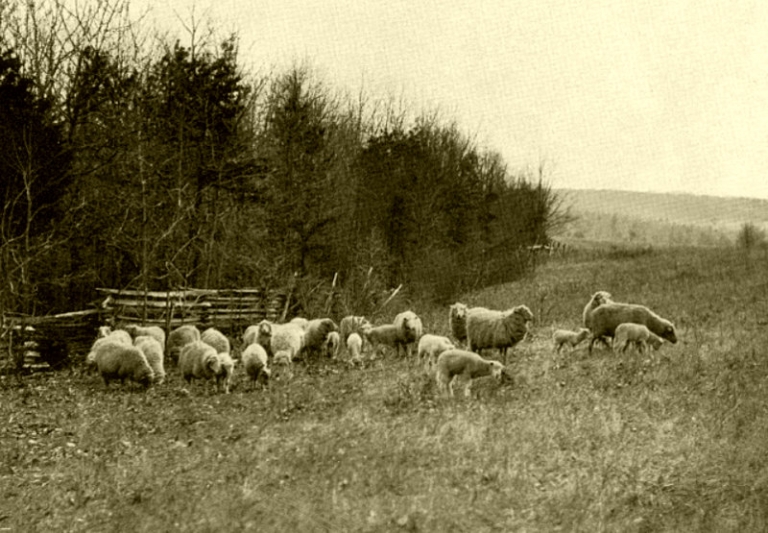
WHEELING, W.Va. — West Virginia may best be known for its vast mountain forests, but its northern panhandle was once a grassland clipped low by sheep.
Part of the vast Ohio market area, which includes much of Ohio and western Pennsylvania, the four northern panhandle counties—Brooke, Marshall, Hancock, and Ohio—produced more wool than all other counties combined.
The panhandle was then part of the largest sheep-growing regions in the U.S. in the 1800s — part of the massive Ohio wool market, which exceeded the Hudson Valley and western New York markets in size.
Sheep had long been an important part of life on highland farms. Although West Virginians who lived in the mountains never ate much mutton, they raised sheep principally for wool. But in the valley and low ridge along the Ohio River, wool production was chiefly commercial, and vast sheep farms
However, making wool in the mountains instead of the valleys was somewhat different, according to the late historian Jim Comstock.
The chief incentive for raising sheep in the state was traditionally to produce wool for home use. In the mountains, women prepared it for home use by carding and spinning it into yarn to make clothing. But in the valley areas, wool was being grown for commercial processing—notably in the Ohio Valley region and in its northern extent in the state's northern panhandle.
In the mountains, however, the old-time breed of sheep was tiny and weighed little more than 40 pounds, but it was hardy, adapted to spending most of its time in the woods, returning home only occasionally to get salt and a little grain.
In autumn, the farmer's family would round up the herd, bringing it down to a field near the farm where hay or fodder would be available when snow covered the ground.
According to historian Jim Comstock, highland shepherding differed from lowland practices, which were much more pastoral.
"The usual practice was to fence a haystack so the sheep could not get at it and periodically to remove hay from it and spread it on the ground for the animals' convenience," he wrote.
To identify their sheep, mountain farmers would cut notches in their ears. Each farmer had a different shape notch used for his animals only. Every other farmer in the area recognized these as identifying marks.
A few rams were kept with the sheep to ensure the maintenance of the flock. One ram for about 20 ewes was an average number, though it was not rigid. Occasionally, a young ram might be castrated and raised for meat. Rams fixed in this way were called "wethers."
"Unlike farmers in European countries," Comstock said, "West Virginia mountaineers never attempted to salt or cure mutton, claiming that the salt would spoil the meat, so, once slaughtered, a lamb or wether had to be eaten quickly."
The most challenging time for a farmer keeping sheep was in the early spring when "lambin' time" occurred. The old-fashioned mountain sheep usually bore their young without trouble and began to nurse them almost immediately, but when improved sheep became famous in later years, there were problems.
Sometimes, a ewe would disown her lamb and refuse to feed it. In such cases, the farmer's family would have to take over with a bottle. Or a ewe who lost her lamb might be given an orphan and persuaded to nurse it, but this was often impossible as sheep do not like to accept offspring that are not their own.
Shearing time was in the spring, and if enough wool grew over the summer months, shearing might be repeated in autumn. Sheep were sheared by hand in the old days. An experienced shearer could shear about 40 animals in a day.
Modern sheep raisers can strip the wool off a sheep with an electric shearer in about three minutes. A large mountain sheep would yield about a pound or two pounds of wool, compared with six to eight pounds for modern "improved" sheep.
One problem with keeping sheep was their lack of ability to defend themselves. Bobcats and even foxes would kill lambs, and packs of wolves and wild dogs would kill whole flocks.
"Once in a while," Comstock wrote, "a domestic dog would become a sheep-killer, and it was said that when a dog got started in this way, there was no means of stopping him from killing."
Other problems mountain sheep suffered included ticks, worms, milk sickness, and other diseases, but they were generally remarkably healthy.
Today, sheep are raised across the state, though its top-producing counties are Pendleton, Greenbrier, Preston, Randolph, and Pocahontas, according to the West Virginia Department of Agriculture. In 2018, more than 32,000 heads were counted, an inventory value of $5.9 million.
Sign up to receive a FREE copy of West Virginia Explorer Magazine in your email twice weekly. Sign me up!






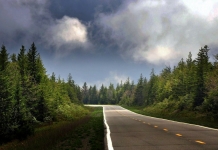







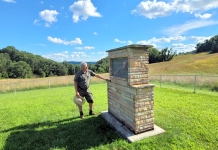

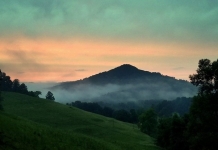








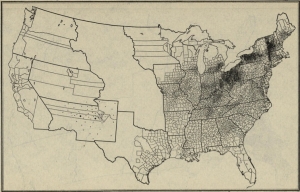




Facebook Comments